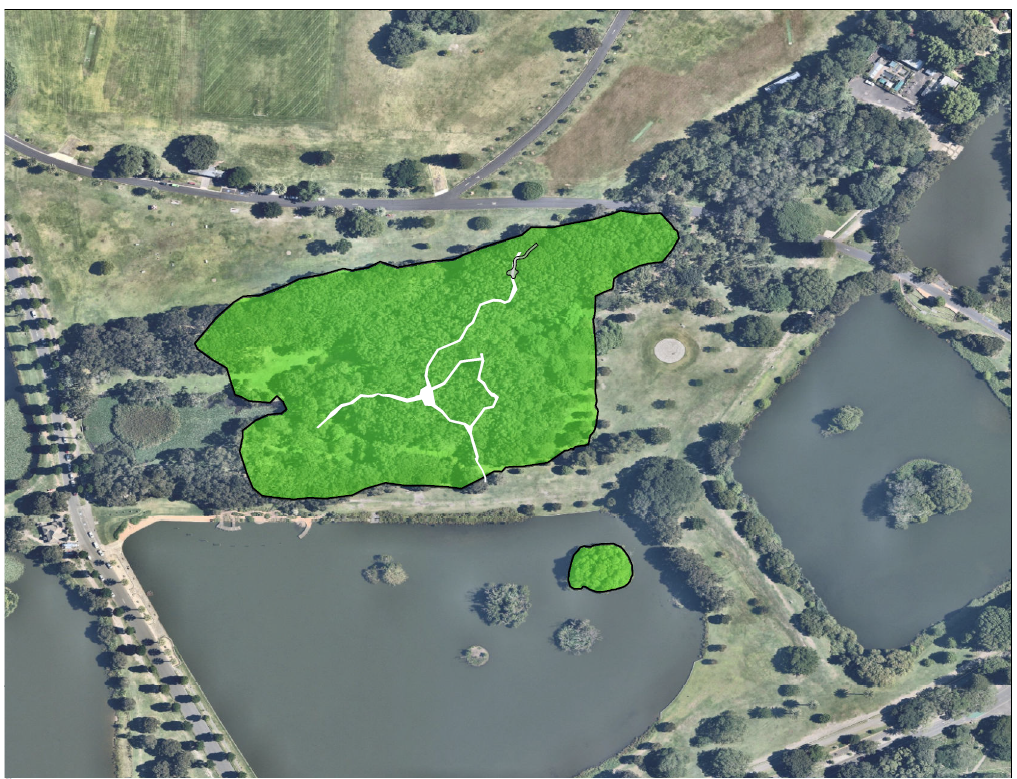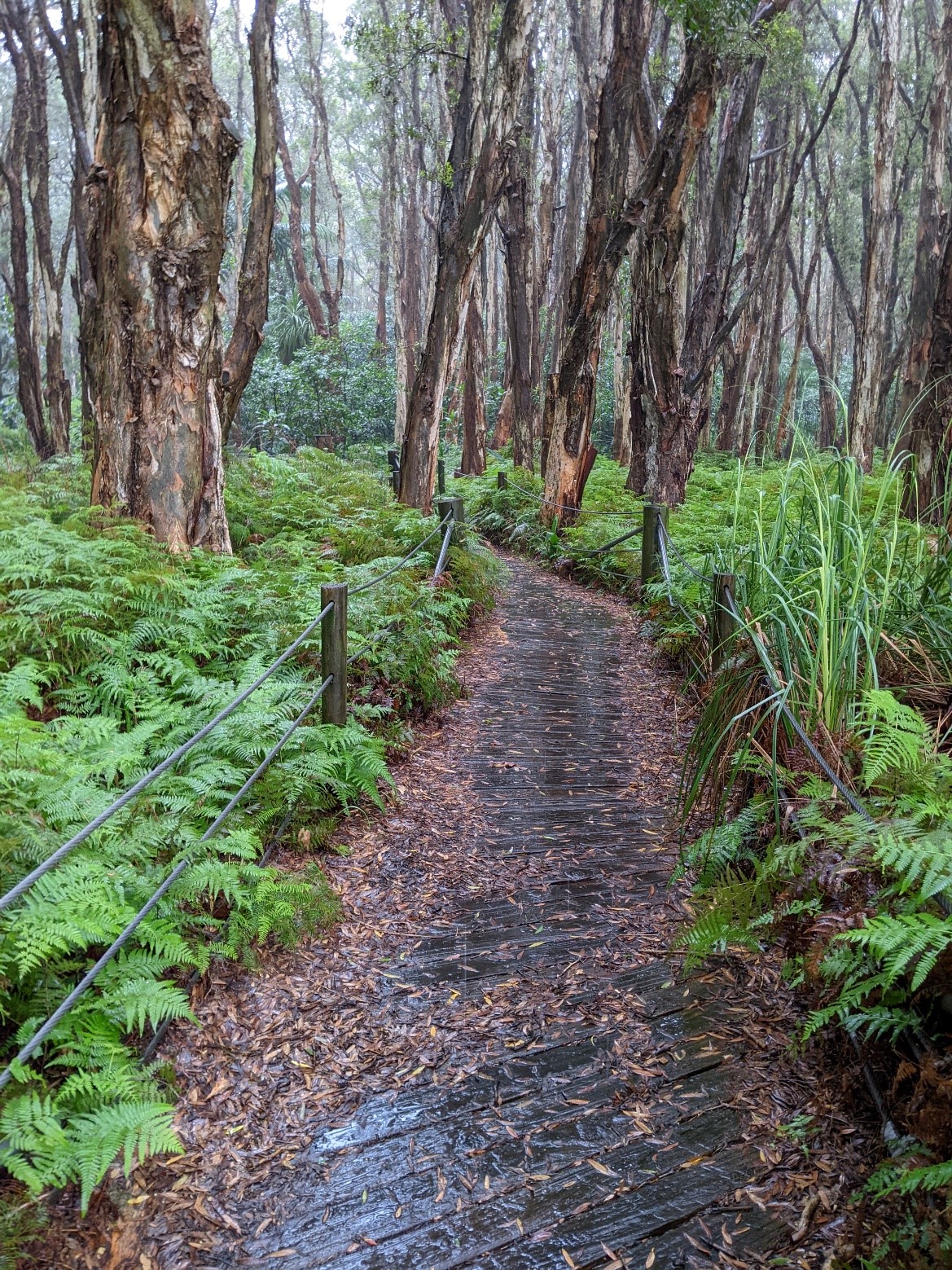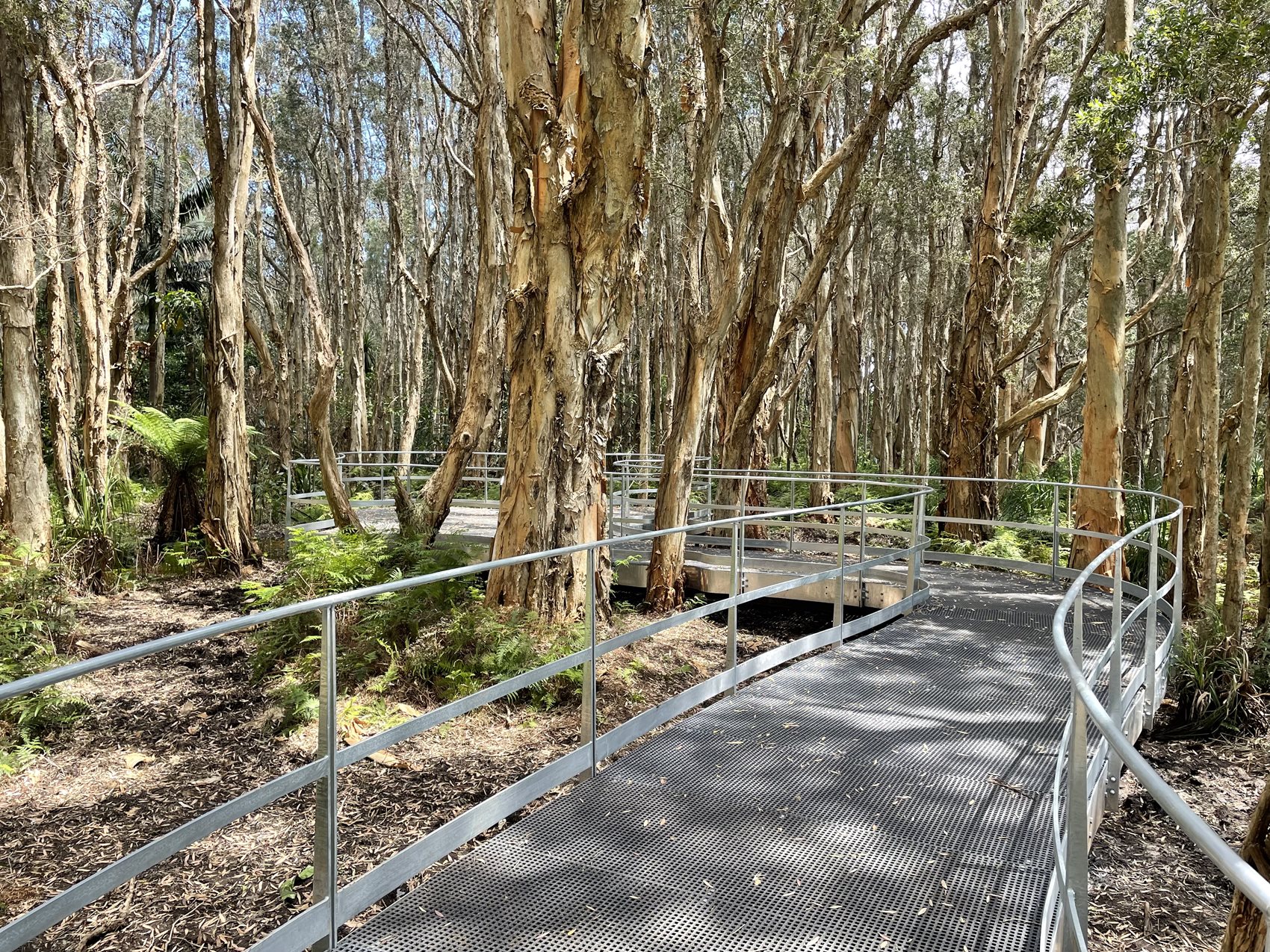Greater Sydney Parklands is committed to maintaining and enhancing natural areas in Centennial Parklands.
Project: Lachlan Swamp Boardwalk Restoration
Location: Lachlan Swamp, Centennial Parklands (off Dickens Drive)
Project Delivery: Early-May 2022 to November 2022 (Completed)
Project Owner: Greater Sydney Parklands, utilising the Centennial Park and Moore Park Trust (CPMPT) Strategic Asset Maintenance Program (SAMP) Stimulus Funding.
Lachlan Swamp history and importance
Lachlan Swamp served as Sydney’s main water supply from 1837 to 1859. Grazing and garbage dumping gradually polluted Lachlan Swamp and ended it as a drinking water source. In 1874, a series of dams were built in the wake of large-scale flooding, however, this only led to increased pollution. Local residents lobbied the then Woollahra and Paddington Councils to turn this Water Reserve into a public park which led to the creation of Centennial Parklands, through legislation in 1887 and its opening on 26 January 1888.
Lachlan Swamp remains one of Sydney’s most important wetlands, providing habitat for the smallest insects to the flying foxes that call the highest tree branches their home. It is also used extensively in educational programs, so visitors and students can explore ecosystem dynamics in an urban wetland and learn more about flying fox colonies.
Lachlan Swamp is home to one of Sydney’s largest grey-headed flying fox colonies. Regular tree assessment and environmental monitoring is carried out in this area to ensure the ongoing health and sustainability of the ecosystem as bat numbers fluctuate with the seasons.
The main tree species in the wetland is the Broad-Leaved Paperbark. These were planted about 30 years ago and grow in ideal conditions.
For a bird’s eye view, check out our video of the Lachlan Swamp in Centennial Park.
Project Purpose
The purpose of the project is to improve:
-
Visitor experience,
-
Wetland management through new plantings,
-
Understanding of natural, cultural and heritage values of the Swamp, and
-
Expand educational opportunities.
Project description
The Lachlan Swamp Nature Trail opened in 1999 for community education and engagement purposes. The current timber walk has now reached the end of its life and needs to be replaced to ensure continued and safe access for visitors to the Swamp.
To replace the timber boardwalk along Lachlan Swamp to ensure safe and continued access for visitors to the park.
Works will be delivered in several stages:
- Construction of a new gravel path before the start of the boardwalk.
- Demolition and removal of existing timber boardwalk and construction of a new composite walkway.
- Restoration of the key entry points with native plantings.
- Installation of new Indigenous interpretative signage, and
- Improvement and ongoing maintenance of the Nature Trail through our Volunteer Program.
Location
 Map of the Lachlan Swamp Boardwalk Restoration
Map of the Lachlan Swamp Boardwalk Restoration
How it looked before
 Lachlan Swamp Boardwalk before it was replaced in 2022
Lachlan Swamp Boardwalk before it was replaced in 2022
How it looks now
 Lachlan Swamp Boardwalk upon completion
Lachlan Swamp Boardwalk upon completion
Impacts of works
Greater Sydney Parklands worked closely with contractors undertaking the works to mitigate impacts on visitors and the environment.
Consultation was conducted with Traditional Owners of Centennial Parklands, including local Indigenous groups and Elders, as well as the Gujaga Foundation.
Bidjigal woman Jordan Ardler conducted this consultation, as well as designing the signage for the trail.